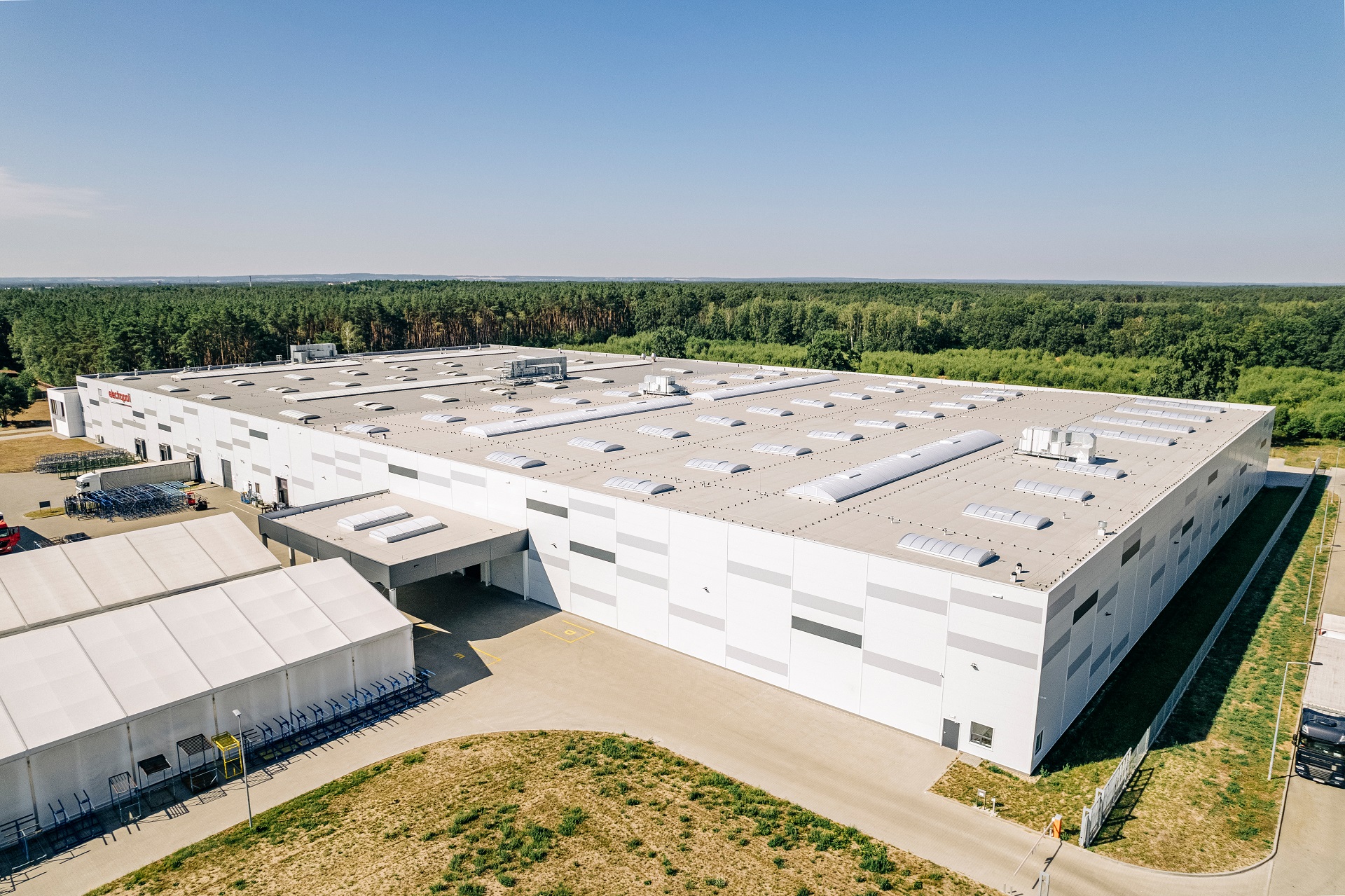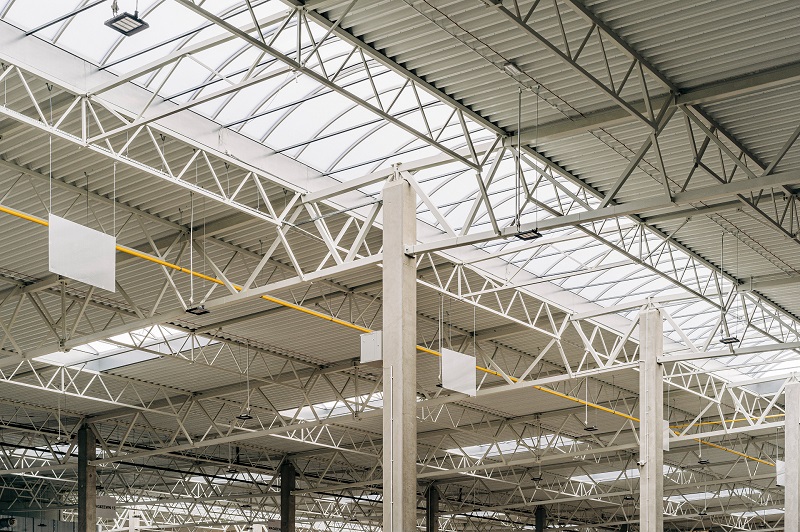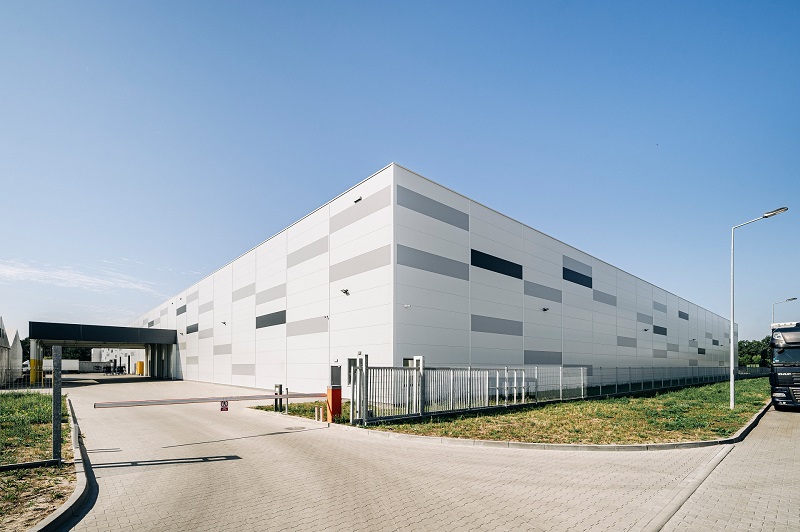
Steel hall extensions – what should be borne in mind?
Steel halls are very often used as production and storage facilities. This is due to their ease of design, erection time and efficiency of material use for this type of building. On expanding their projects, investors often decide to purchase new machinery and equipment or extend production lines to increase the plant’s capacity. All this is aimed at improving and upgrading the facility. In order to do this, an extension should be carried out. By definition, an ‘extension’ is a type of construction that creates a new part of an existing building. Historically, this type of project has involved a decision to take a facility out of service. Nowadays, with the development of technical know-how, computer programmes, the sophistication of construction machinery and equipment improving quality and safety, extensions are carried out without interrupting production processes or with partial shutdowns.
Most often, the extension of a hall involves increasing its length, less often the width. Some of the main aspects to look out for when considering the extension of a hall are discussed below.

The extension of the steel hall can be planned as early as the design stage. This is the most favourable scenario. This makes it possible to introduce pre-conceived solutions that will allow an increase in the usable area of the building to be carried out easily in the future. Therefore, it is good practice among designers to design roof and wall bracing at the fore rather than at the extreme beams. By placing these elements between the second and third frames counting from the beginning and end of the hall, the later hall expansion does not affect the bracing system, nor does it require reworking the structure during assembly. Another solution used with a view to future hall expansion is to make the outermost frames from the same sections as the inner frames. Before expansion, they are less stressed and may appear to be inefficiently used elements, but at the time of expansion, the end frame becomes the inner frame and its strain increases significantly.
Things are different when the extension of the hall had not been assumed at the design phase. Increasing the length of a steel or reinforced concrete hall is most often done by adding additional frames, as mentioned earlier. This is not a major execution problem, but it note that in this situation the gable wall frame becomes the inner frame and takes the load from the larger roof area. This must be taken into account in the static-strength calculations. Sometimes it becomes necessary to double the gable frame by adding a new gable frame for a new hall, in the immediate vicinity of the existing one, which usually involves widening the foundations. Expansion of a warehouse is more often achieved by increasing its width. This is done by adding one or more adjacent aisles, depending on the needs of the investor. If the existing columns have an adequate reserve of load-bearing capacity they can be used to support the designed rafters. If this is the case, note that they become internal poles and thus have to take on greater impacts.
Hall extension vs. fire conditions
It goes without saying that extending a production and storage hall increases its usable floor space. It is important to note that as this parameter increases, the fire zone of the building may change. Production halls i storage halls are classified as PM (production and storage) in terms of fire conditions. The fire load density Q, measured in MJ/m2, is used as the basis for classification in this category and is related to the amount of materials present in the hall that can be ignited. So a hall with a larger surface area will be designed to store more of these materials, plant or equipment. An increase in the area of the fire zones is permitted on condition that:
- protection of the zone is provided with fixed automatic water extinguishing systems,
- automatic smoke extractors are provided,
- the building contains no potentially explosive atmospheres and is made of non-fire-spreading elements.
Alternatively, the most common solution to leave the original division of fire zones is to build a fire separation wall. It is a masonry wall strengthened with reinforced concrete monolithic rims and studs. Note that such a wall must provide the load-bearing, insulating and fire tightness (REI) performance. This divides the total area of the hall into smaller zones that meet the requirements of the regulation.

Expansion plan for a hall
A well-planned warehouse or production hall extension will have tangible benefits for both, the investor and the contractor. For both actors in this project, lead time is important. From the investor’s point of view, the most important factor is that the production of the plant should take place without interruption due to expansion. If this is unavoidable, of course, this has to be kept as short as possible.

Please note that this type of work requires planning permission. It is therefore worth thinking about this in advance, as the waiting time for such a document is several weeks. Once the planning permission has been granted, work on the site begins. The structural axes must be determined by surveying, followed by the earthworks, i.e. the excavation, reinforcement and concreting of the footings. Once the concrete is strong enough, you can move on to installing the steel structure of the additional frame or aisle. The work ends with the installation of cladding with the necessary door and window flashings.
From the contractor’s point of view, the extension of an existing hall differs from the construction of a newly designed facility. The proximity of existing buildings makes earthworks and the installation of the structure itself very challenging. It is crucial to create a schedule linked in time to the work of the extended facility. This will ensure that the work is carried out efficiently and safely. It is the safety of the crew and of the equipment and machinery that is the most important factor on the part of both, the investor and the contractor.



